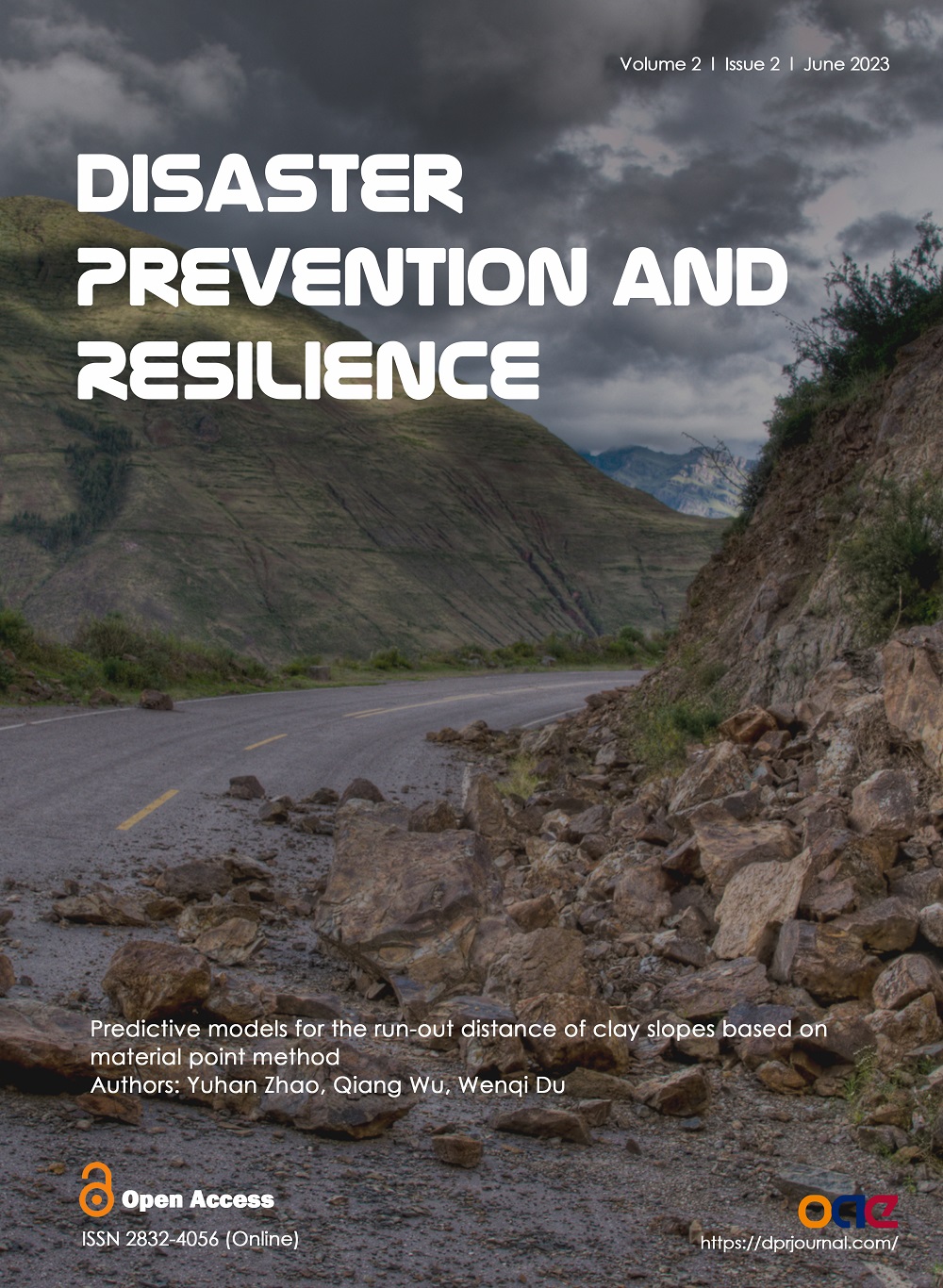Volume 2, Issue 2 (2023) – 8 articles
Cover Picture: This paper aims to propose run-out distance predictive models for clay slopes using the material point method (MPM), which can simulate the progressive failure process of slopes considering the strain softening effect of soils. A suite of 100 ground motions is selected from the NGA-West2 database and then scaled for conducting the dynamic analysis of slopes. The permanent slope displacements (D) can be classified into two categories, namely the “un-failure” category with D smaller than 0.4 m and the “failure” category with D in the range of 10 m to 15 m. It is found that peak ground velocity (PGV) exhibits the highest correlation with D for the "un-failure" category, whereas all ground-motion intensity measures (e.g., PGV, peak ground acceleration) are less correlated with D for the “failure” category. Therefore, the run-out distance of collapsed clay slopes is more related to the failure model rather than the triggering shaking intensities. Moreover, thousands of slope models with various slope angles, slope heights (H), soil densities, and peak and residual strength parameters are developed based on MPM. The run-out distances for the slopes being collapsed are then collected. Predictive models for different slope angles are proposed, which predict the run-out distance as a function of H, unit weight, residual cohesion, and residual friction angle. The proposed models are applicable for clay slopes with slope angles in the range of 30° to 45° and H in the range of 10 m to 30 m.
view this paper 





